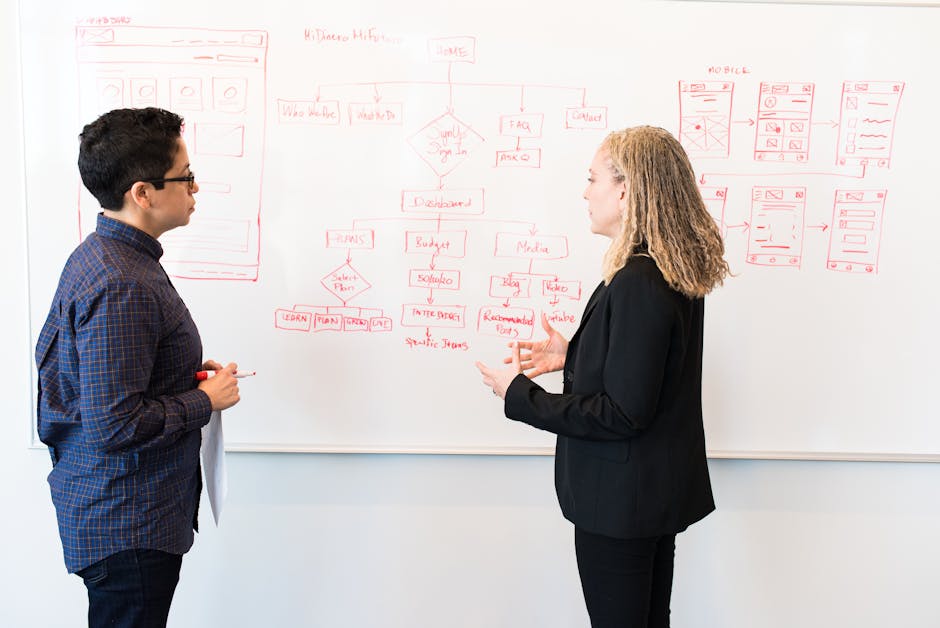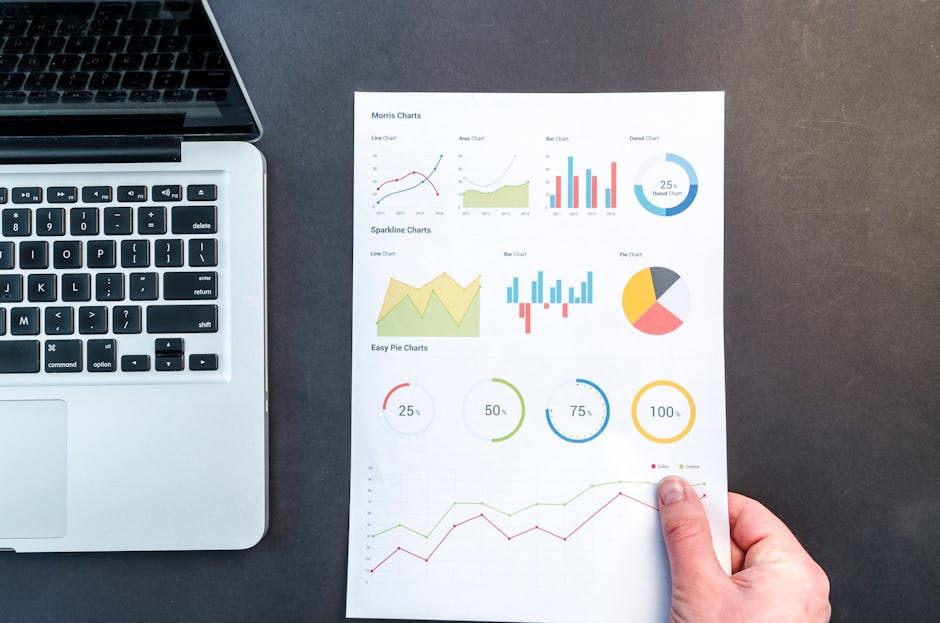Techniques for Conducting User Research to Inform UX Design
Embark on a user research journey using surveys to uncover gems of insight. Craft your questions wisely—those user nuggets are precious! Interviews are your treasure map, revealing desires and frustrations. The art of probing reveals hidden chests of information, so get those insights flowing. Explore user behaviour depths with observations and ethnographic research. Discover user interaction secrets and decode their language through heatmaps and analytics. The more you investigate these techniques, the richer your UX design finds will be. Open the door to user enlightenment and pave your path to design greatness.
Key Takeaways
- Craft effective survey questions for precise insights.
- Utilise insightful probing questions during interviews.
- Analyse user interactions to uncover pain points.
- Use heatmaps to visually dissect user behaviour.
- Immersion in user environments aids in understanding behaviours.
Surveys

Starting the user research journey, surveys serve as your trusty steed, galloping through the vast landscape of user insights with swift precision. Survey design is your armour, ensuring your questions are sharp and effective in gathering the necessary data for your UX design quest. Craft each question thoughtfully, like forging a finely honed blade ready to pierce through ambiguity and uncover valuable user preferences.
Once your surveys are impeccably designed, it’s time to send them out into the world. Survey distribution becomes your rallying cry, echoing through the digital domain, calling upon users to share their thoughts and experiences. But beware, for the treacherous domain of low response rates lurks nearby, ready to thwart your efforts. Analyse the data like a seasoned warrior, extracting meaningful insights from the battlefield of responses.
In this epic tale of user research, surveys play an important role as your faithful companion, guiding you towards the coveted prise of user-centric UX design.
Interviews

Ah, interviews, the art of extracting user insights like a skilled detective interrogating a suspect.
Get ready to craft questions that will make users spill their deepest desires and frustrations, guiding you to the holy grail of user needs assessment.
With interview analysis techniques up your sleeve, you’ll decipher their words like a UX design oracle, revealing the path to creating products that users will adore.
User Needs Assessment
Begin the enlightening journey of conducting user interviews to explore the depths of understanding user needs in your UX design process. User interviews are the cornerstone of user research, providing valuable insights into the minds of your target audience.
Here are three key aspects to ponder when conducting user needs assessments through interviews:
-
User Personas: Immerse yourself in creating detailed user personas before conducting interviews to make sure you target the right audience segments effectively.
-
User Behaviour: Observe and analyse user behaviour during interviews to uncover implicit needs and preferences that users mightn’t explicitly state.
-
User Journey Mapping: Use insights from interviews to map out the user journey, understanding pain points and areas where your design can make a significant impact.
Insightful Probing Questions
Initiate the art of crafting insightful probing questions during user interviews to unearth the hidden gems of user insights crucial for enhancing your UX design process. To truly grasp the essence of your users’ needs and desires, you must embark on a journey of empathy building and understanding user perspectives.
It’s not just about scratching the surface; it’s about taking a thorough exploration into the ocean of user motivations.
When formulating your probing questions, remember to channel your inner detective. Ask open-ended questions that encourage users to share their thoughts, feelings, and experiences freely. Explore the why behind their actions, uncovering the underlying reasons that drive their behaviour.
Provoke thoughtful responses that reveal the intricacies of their decision-making process.
Interview Analysis Techniques
Explore the domain of interview analysis techniques to unravel the intricate tapestry of insights woven by your users’ responses.
In the field of UX design, decoding the nuances of user interviews is akin to deciphering a cryptic message from an ancient civilisation – challenging yet immensely rewarding.
Coding Analysis: Much like cracking a code, organising and categorising interview data through coding analysis can reveal patterns, themes, and key takeaways that might’ve otherwise remained hidden in the labyrinth of responses.
Nonverbal Cues: Remember, words aren’t the only currency in the domain of interviews; pay attention to the subtle dance of nonverbal cues – a raised eyebrow, a hesitant pause, or a nervous fidget – they often speak louder than words.
Unsaid Narratives: Sometimes, what isn’t said holds more weight than what’s spoken. Dive deep into the silences, the hesitations, and the gaps in conversation; therein lies a treasure trove of insights waiting to be uncovered.
Observations

Immerse yourself in the observations of users in their natural habitat, for this is where valuable insights await to inform your UX design decisions. Ethnographic research will be your trusty sidekick on this adventure, providing you with real-world insights that no amount of surveys or interviews could ever match.
Engage in the depths of contextual enquiry, where the treasure trove of user behaviour lies waiting to be discovered.
As you watch users interact with your product, pay attention to the subtle nuances that reveal their true intentions and frustrations. Are they clicking aimlessly, or do their actions have purpose? Notice the way they navigate through your interface – is it smooth sailing or a shipwreck waiting to happen?
These observations are your breadcrumbs, leading you towards a UX design that resonates with your users on a deeper level.
User Testing

So, you’ve gathered all your insights and observations, feeling like a detective with a magnifying glass.
Now it’s time to put your Sherlock skills to the test – literally. Test scenarios effectively, gather those direct observations, and analyse user interactions like you’re solving the mystery of the century.
It’s all about getting down to the nitty-gritty, peeling back the layers, and uncovering the truth behind user behaviour.
Test Scenarios Effectively
Crafting effective test scenarios isn’t just an art, but a science that can make or break the success of your user testing endeavours. So, you think you can throw together some random scenarios and hope for the best? Think again! Here are three tips to help you hit the bullseye with your test scenarios:
-
Bring on the Drama:No, we’re not talking about reality TV levels of drama here. Incorporate role-playing exercises into your test scenarios to add a touch of realism that will have your users fully engaged and giving you valuable feedback.
-
Set the Scene:Contextual enquiries are your best friend. Don’t just plop users into a void and expect miracles. Create realistic environments that mimic their actual usage scenarios to uncover insights you never knew existed.
-
Hands-On Approach:Task simulations are where the magic happens. Don’t just ask users what they think; make them roll up their sleeves and interact with your design. This hands-on experience will reveal more than a hundred user feedback sessions ever could. So, get creative and watch your user testing thrive!
Gather Direct Observations
Engage in the art of user testing to gather direct observations that will reveal the true user experience of your design. By immersing yourself in the world of your users through methods like ethnographic research and contextual enquiries, you can uncover valuable insights into user behaviour patterns and preferences. These observations are like precious gems, waiting to be discovered and polished to perfection for your design’s benefit.
To truly understand the nuances of your users’ interactions, consider conducting useability studies that provide a structured approach to evaluating the effectiveness and efficiency of your design. Through direct observation, you can witness firsthand how users navigate through your interface, uncovering pain points and moments of delight along the way.
Here is a helpful table to illustrate the different methods you can use for gathering direct observations:
| Research Method | Description |
|---|---|
| Ethnographic Research | Immersing in users’ environments to understand behaviours |
| Contextual Enquiries | Conducting interviews in the user’s context for insights |
| Useability Studies | Testing design with users for effectiveness and ease of use |
Analyse User Interactions
Immerse yourself in the world of user interactions through rigorous user testing, where the true essence of your design’s functionality is revealed.
-
Observe User Behaviour: Engage as users fumble, click, scroll, and hopefully not curse their way through your interface. It’s like witnessing a beautifully chaotic dance of frustration and enlightenment.
-
Track Engagement Metrics: Plunge into the abyss of data analytics to decipher the mysterious signals of user interest, boredom, or outright confusion. Who knew a simple click could reveal so much about human nature?
-
Uncover Pain Points: Delight in the agony of discovering where your design falls short, where users get stuck, and where they simply give up. It’s like a treasure hunt, but instead of gold, you find ways to improve your UX design.
User testing isn’t just about watching people use your product; it’s about uncovering the hidden truths of user behaviour and translating them into actionable insights.
Heatmaps
Explore the intriguing world of heatmaps, where user behaviour is visually dissected and laid bare for your analytical pleasure. Unlike the mysterious allure of eye tracking or the simplistic charm of click tracking, heatmaps offer a vivid portrayal of your users’ digital footprints. With heatmaps, you can uncover the hotspots where users linger, the icy cold areas they avoid like the plague, and the lukewarm regions that leave you scratching your head.
By utilising eye tracking and click tracking data, heatmaps paint a colourful picture of user engagement on your website or app. These visual representations showcase where users focus their attention, what buttons they luv to click, and which parts of your design they simply overlook.
It’s like having a digital detective at your disposal, revealing the secrets of user interaction without them even realising it.
Analytics

Uncover the tangled web of user behaviour with the sharp analytical tools of Analytics, where data speaks volumes about your users’ digital journey.
-
Data Visualisation: Immerse yourself in the world of colourful charts, graphs, and maps that transform mundane numbers into a work of art. Who knew data could be so visually appealing? It’s like crafting a masterpiece with your users’ interaction patterns.
-
Conversion Tracking: Keep a vigilant eye on those elusive conversions as they move around your website. Are they slipping through the cracks or converting like never before? It’s like a digital detective game where every click tells a story.
-
Insights Galore: Discover hidden gems in the sea of data that could revolutionise your UX design. It’s like stumbling upon a treasure chest full of user preferences, behaviours, and trends waiting to be explored. Don’t miss out on the goldmine that’s user analytics!
Conclusion
Congratulations, you’re now a user research guru! Armed with surveys, interviews, observations, user testing, heatmaps, and analytics, you hold the power to reveal the secrets of user behaviour and design the most flawless UX experience known to mankind.
So go forth, brave researcher, and let the insights flow like a majestic river of user-centric design perfection. The digital world awaits your genius!
Contact us to discuss our services now!
